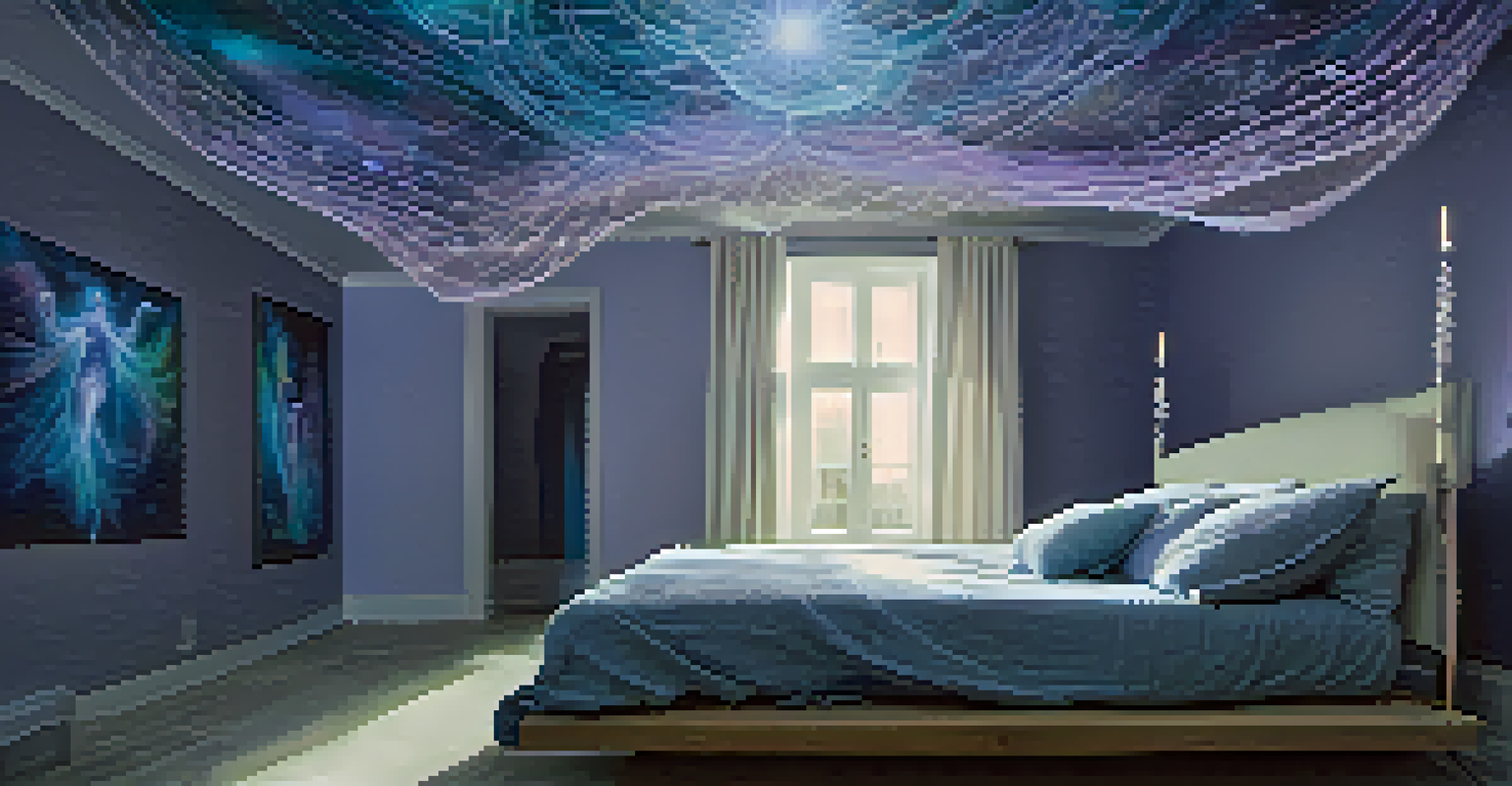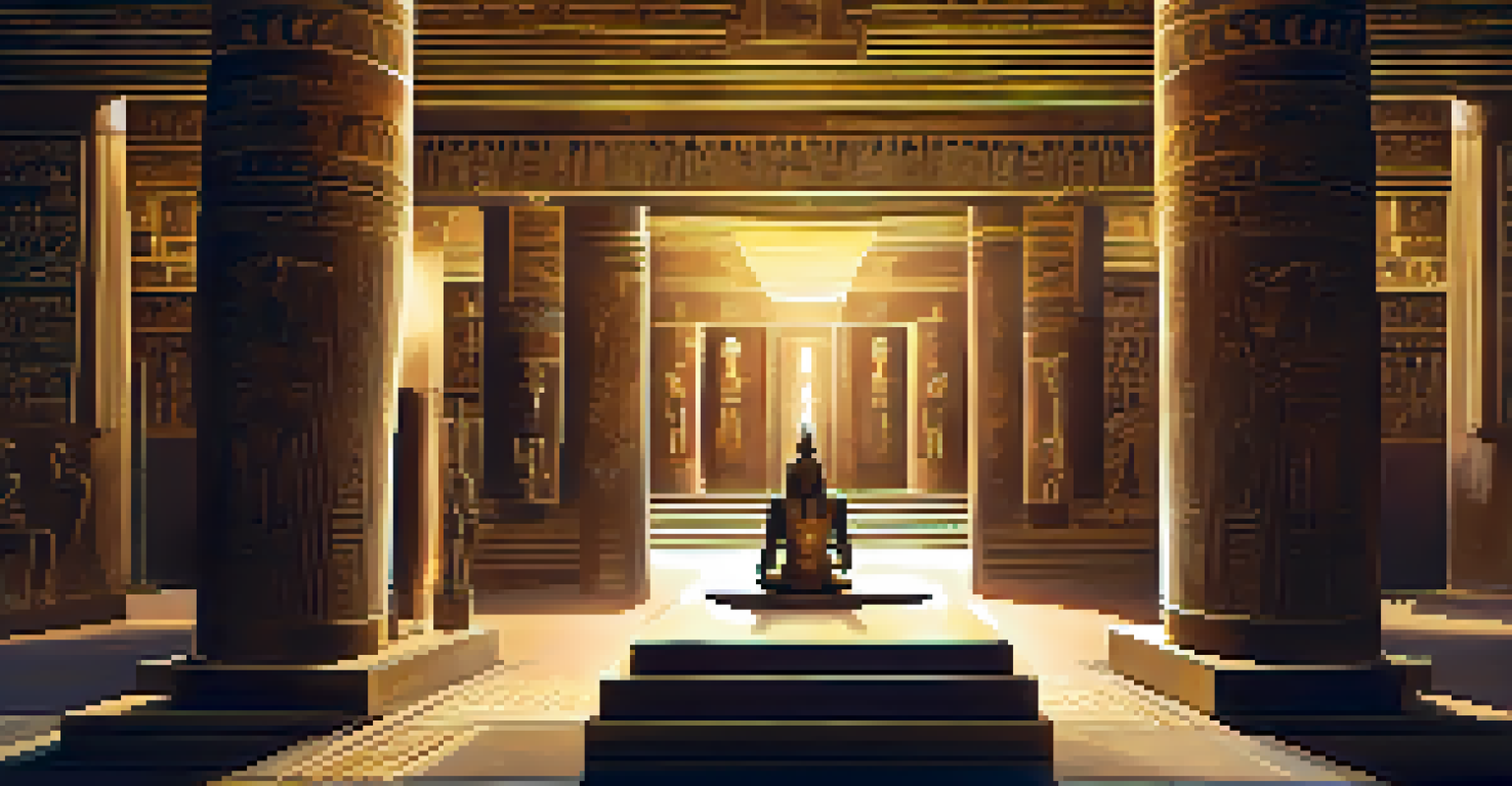The Science Behind Astral Projection: Fact or Fiction?

What is Astral Projection and Its Historical Roots?
Astral projection is often described as an out-of-body experience where the soul or consciousness separates from the physical body. This concept has deep historical roots, with references found in various cultures, from ancient Egypt to Hinduism, where it's seen as a spiritual journey. Many people claim to have experienced this phenomenon, often relaying stories of floating above their bodies or traveling to different realms.
The mind is everything. What you think you become.
Throughout history, different cultures have interpreted astral projection in unique ways. For example, in ancient Egypt, it was believed that the soul could travel to the afterlife, while in Eastern philosophies, it is tied to meditation and enlightenment. These cultural perspectives have shaped the modern understanding of the practice, making astral projection a fascinating subject of study.
As we delve deeper into this phenomenon, we can see how it straddles the line between spirituality and science. While many view astral projection as a mystical experience, there are scientists who seek to understand the neurological and psychological aspects of such experiences, leading to an intriguing intersection of beliefs and empirical research.
The Psychological Perspective: Dreams or Reality?
From a psychological standpoint, some researchers argue that astral projection may simply be a vivid dream or a form of lucid dreaming. During these states, the mind can create incredibly realistic experiences that feel genuine. Individuals who have practiced lucid dreaming often report sensations similar to those described during astral projection, such as being able to control their movements and environment.

Additionally, the brain's activity during sleep can mimic the sensations associated with astral experiences. Studies using EEG and fMRI have shown that certain brain waves are linked to altered states of consciousness, where perception and reality can blur. This suggests that what some people perceive as an astral journey could be a complex interplay of brain activity rather than a physical separation of the soul.
Astral Projection's Cultural Roots
Astral projection has historical significance across various cultures, from ancient Egypt to Eastern philosophies, shaping its modern understanding.
This psychological lens opens up a broader conversation about the nature of reality and perception. If astral projection can be explained through brain function, it raises questions about what we consider real and how our minds interpret experiences. This exploration invites us to consider the boundaries of human consciousness and the mysteries that still lie within.
Neurological Insights: What Happens in the Brain?
When discussing astral projection, it's essential to consider the neurological processes that could explain such experiences. Research indicates that certain areas of the brain are activated during out-of-body experiences, particularly the temporoparietal junction, which plays a role in spatial awareness and self-perception. This might explain why some individuals report feeling detached from their bodies.
Reality is merely an illusion, albeit a very persistent one.
Furthermore, the brain's ability to create a sense of 'self' is fascinating. During altered states of consciousness, the brain can reconfigure how it perceives reality, leading to the sensation of floating or detaching from the physical body. This has been observed in patients with specific neurological conditions, suggesting that the experience of astral projection could be a neurological phenomenon.
Understanding these brain mechanisms not only sheds light on astral projection but also invites further inquiry into other altered states of consciousness. The line between perception and reality is complex, and by studying the brain, we can begin to unravel the mysteries behind experiences that seem to defy the laws of nature.
The Role of Meditation and Altered States
Meditation is often linked to astral projection, as both practices encourage deep relaxation and altered states of consciousness. Many practitioners report that meditation can serve as a gateway to experiencing astral projection. By quieting the mind and focusing on breathing, individuals may find it easier to enter a state where they feel detached from their bodies.
Research has shown that meditation can lead to changes in brain activity, promoting feelings of peace and altered perception. These changes can facilitate experiences that resemble astral projection, highlighting the connection between mental discipline and the exploration of consciousness. In this sense, meditation acts as a training ground for those seeking to embark on their astral journeys.
Psychology vs. Reality of Experience
Some researchers suggest that astral projection may be explained as vivid dreams or altered states of consciousness rather than actual out-of-body experiences.
The relationship between meditation and astral projection also emphasizes the importance of intention and focus. Many practitioners believe that setting a clear intention before meditating can enhance the likelihood of achieving an astral experience. This practice not only showcases the power of the mind but also illustrates the potential for personal growth and exploration through these techniques.
Scientific Skepticism: Debunking Common Myths
While many enthusiasts advocate for the reality of astral projection, scientific skepticism remains prevalent. Critics argue that the phenomenon lacks empirical evidence and that personal anecdotes are insufficient to validate such experiences. In the scientific community, the absence of measurable data often leads to the dismissal of astral projection as mere folklore or psychological tricks.
Moreover, skeptics point to the potential for cognitive biases, where individuals may interpret normal physiological sensations as extraordinary experiences. For instance, feelings of weightlessness or detachment can occur during sleep paralysis or extreme fatigue, leading to misunderstandings of these states. This highlights the need for rigorous scientific scrutiny before accepting astral projection as a genuine phenomenon.
This skepticism encourages a balanced view of astral projection, prompting individuals to explore both the spiritual and scientific dimensions of the experience. By engaging with both sides of the argument, we can foster a more comprehensive understanding of this intriguing topic while respecting the beliefs of those who claim to have experienced it.
Personal Accounts: Stories of Astral Projection
Many individuals who claim to have experienced astral projection share vivid, often transformative stories. These accounts often describe sensations of floating above their bodies, visiting distant places, or encountering spiritual beings. Such narratives can be both compelling and perplexing, as they challenge our conventional understanding of reality and consciousness.
For instance, some practitioners recount experiences where they met deceased loved ones or gained insights that profoundly changed their lives. These personal stories serve as a testament to the powerful impact of astral projection on individuals, illustrating how such experiences can lead to deeper self-awareness and spiritual growth.
Future of Astral Projection Research
Interdisciplinary studies combining psychology, neurology, and spirituality are poised to deepen our understanding of astral projection and consciousness.
However, while these accounts are deeply meaningful to those who experience them, they also raise questions about the subjective nature of reality. How do we discern between genuine astral experiences and vivid dreams or hallucinations? These personal narratives invite us to explore the nature of human consciousness and the many ways we seek to understand our place in the universe.
The Future of Astral Projection Research
As interest in astral projection continues to grow, researchers are beginning to explore this phenomenon with more rigor. The intersection of psychology, neurology, and spirituality presents a unique opportunity for interdisciplinary studies. By examining the experiences of those who practice astral projection, scientists can gather valuable data that may help demystify this captivating topic.
Future research may leverage advancements in technology, such as neuroimaging and virtual reality, to create controlled environments for studying astral experiences. These innovations could provide insights into the brain's role during such phenomena, potentially bridging the gap between science and spirituality. This could lead to a deeper understanding of consciousness and its limits.

Ultimately, the future of astral projection research holds promise for both skeptics and believers alike. By fostering open dialogue and curiosity, we can explore the boundaries of human experience and expand our understanding of consciousness in ways we have yet to imagine.